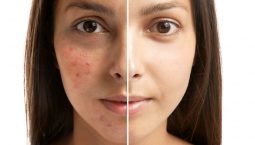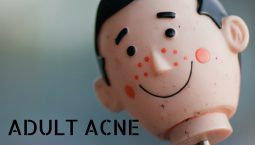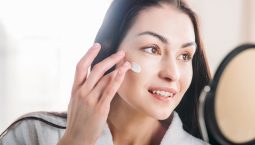Having excessive and unwanted hair is one of the most important cosmetic concerns that women face. While for some it may be an inherited trait – grandmothers/ mothers and daughters going through the same problem, for others, it may be due to an underlying hormonal imbalance. Yet for some others, there may be no causal factor identifiable. Whatever be the cause of excessive and unwanted hair, hair removal by laser offers a safe and effective solution to this distressing problem. At RENDER Skin & Hair (formerly, Dr Renita Rajan Skin & Hair Clinic), we offer pre laser consultations to evaluate and look for factors that indicate an underlying hormonal abnormality in all cases of hirsutism. Following which, a treatment protocol indicating the number of sessions required and the schedule to be followed is created, customized to each patient. The laser sessions are then followed by a post procedure consultation, to assess the outcome and to discuss the need for future sessions, if so required.
Excessive Body Hair
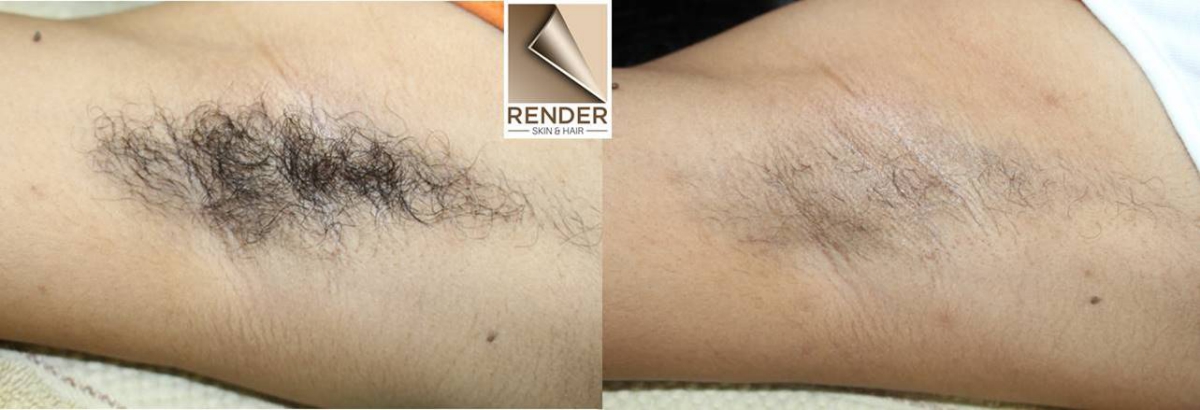
What is hirsutism?
Hirsutism is the excessive growth of coarse, terminal hair in women, in a distribution that is usually noticed only in males. For example, hirsutism may involve the growth of coarse hair in the beard, chin, upper lip and chest – areas which are usually not associated with excessive hair growth in women. While it can be a cosmetic concern, hirsutism can also indicate an underlying hormonal imbalance.
Why does hirsutism occur?
Hirsutism occurs due to a higher level of male hormones called androgens in the body. While androgens are present in the female body even normally, a higher level may be seen in some women, either as a genetic trait, or as a result of abnormalities in hormonal pathways in association with conditions such as polycystic ovary disease/syndrome (PCOD/PCOS), and rarely due to underlying tumors in the ovary or the adrenal glands.

What is the laboratory work up for hirsutism?
As mentioned above, since an excess level of androgens is considered to be present in hirsutism, a work up typically involves looking for the levels of a set of hormones – testosterone, androstendione, 17-hydroxyprogesterone, and DHEAS (dehydroepiandrosterone sulphate), which are nothing but different androgens, male hormones which may be elevated in cases of hirsutism. Most importantly, since the most common cause of hirsutism happens to be PCOD/PCOS, clinical and lab evaluation for the same will be carried out. Evaluation for less common causes will be sought for on a need basis.Also, since hypothyroidism is also a cause, though less common, for hirsutism, a fasting thyroid profile will also be considered. Insulin resistance testing may also be required.
NOTE : If you have already been evaluated and have undergone these tests, make sure to bring your results, when you come in for a consultation at the This will avoid unnecessary expense and delay.
What is the usual procedure for treatment of excessive hair at RENDER?
Even as you fix your appointment for a hair removal consultation, you will be reminded to bring in any relevant test reports that you already have. During the consultation a detailed history and examination will be done to evaluate for underlying conditions that may be the cause of increased hair growth. You will be prescribed lab tests/ pelvis scan if so required. Finally, the nature and type of hair growth, the distribution and density of hair will be assessed in order to arrive at the suitable fluences to be used during the laser hair removal session. For this reason, allow a hair growth of about one week to ten days, prior to coming in for your laser procedure.
You will then be given a follow up date and time, when the laser session will be carried out – you can also bring in your lab results (the ones that have been requested at your previous consultation), for review at this time. Or you can have your results reviewed, and then opt for the laser session at a later date. You can decide this in discussion with Dr Renita Rajan during your consultation. Please make sure to not shave/ epilate your hair before coming in for the hair removal session. Pre and post photos are a must, since photographic records are important to assess treatment efficacy, ascertain patient satisfaction and ensure quality.
Just before you begin, your hair will once again be assessed to arrive at the fluence settings, and then the area to be treated will be shaved. This is followed by the actual laser hair removal, the duration of which will depend on the area to be treated. After the session, a soothing lotion will be applied on the treated area, and if the treatment was done on exposed areas, a sunscreen will also be applied.
You will then be given a follow up date, to come in for the next session.
I do not have excessive hair - but I would like to have hair removal done since I don't want to go through the hassle of waxing and shaving. Is Laser hair removal a good option for me?
Yes, laser hair removal is a very good option indeed, even for women who do not have excessive hair but would prefer to not go through the pain and hassle of repeated and never ending sessions of waxing/ threading/ shaving/ epilation. In fact, over time, the laser hair removal tends to be a cost effective option if one takes into account the multiple sessions of hair removal by waxing/ threading/ shaving that one would have to go through lifelong otherwise!
Is it permanent hair removal?
No, laser hair removal results in permanent hair reduction – one can get anywhere between 40 – 80% reduction of hair growth using lasers.
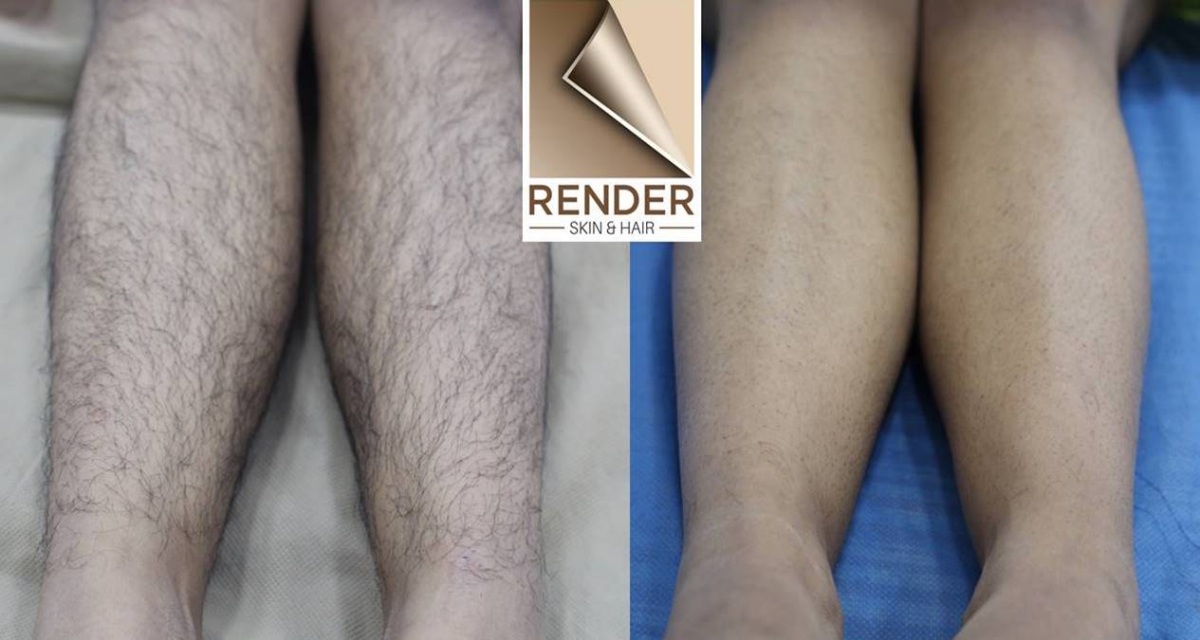
Why do I need multiple sessions?
By doing repeat sessions spread over time, the resting hairs can also be targeted at they get into the growth phase. This is because at any given time, the hairs in the body are constantly following a cycle of growth, rest and and falling out. This is a regulated cycle, and by timing the sessions a few weeks apart, it is possible to target dormant hairs, once they get into the growth phase. There may be some regrowth a year or two after the procedure, and this can be managed with a follow up session. Also, by increasing the time interval between sessions (after an initial 3 sittings) it is possible to sustain good results.
What is the post procedure care?
You may be prescribed a soothing lotion/ cream/ spray to use on the treated area, and if the hair removal was done on sun exposed areas, you will need to use a sunscreen regularly. Also, attention to good hygiene is a must over the treated area. There is no other post procedure care involved.
How many sessions does it take to see results?
You may start noticing results in 2 -3 sessions, but some patients may take as many as 7 to 8, sometimes, more too. As this depends a lot on individual factors, genetic tendencies and hormonal imbalances or changes, it is not always possible to predict or guarantee the outcome, as to the percentage of clearance or the number of sessions. Hormonal conditions like PCOS may require many more sessions than others, and these individuals may also require additional maintenance sessions over the years.
Men require more sessions than women.

